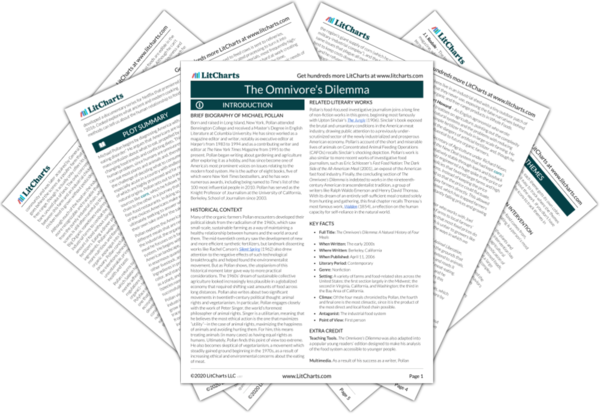AI ToolsNew
Tools to make learning and teaching easier
The Omnivore’s Dilemma Study Guide |
Next
Summary
|
Welcome to the LitCharts study guide on Michael Pollan's The Omnivore’s Dilemma. Created by the original team behind SparkNotes, LitCharts are the world's best literature guides.

Teaching Tools. The Omnivore’s Dilemma was also adapted into a popular young readers’ edition designed to make his analysis of the food system accessible to younger people.
Multimedia. As a result of his success as a writer, Pollan developed a documentary series for Netflix that premiered in 2016. Cooked explores what ancient and modern cooking methods can tell us about the human relationship to food.